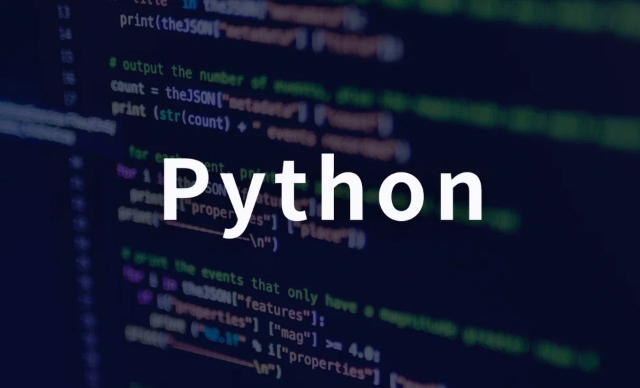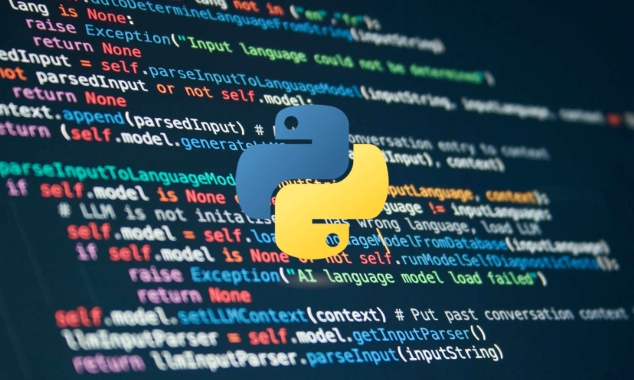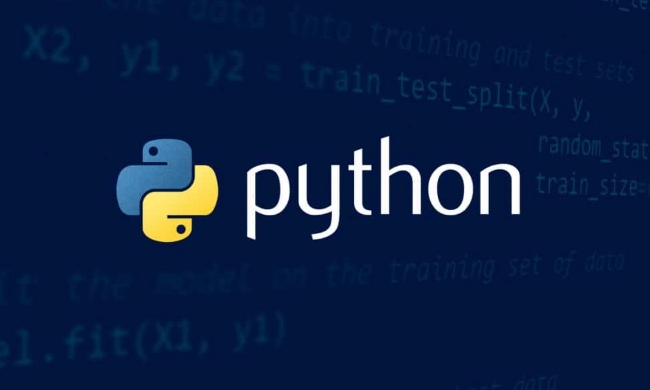Pillow library image processing is very simple and suitable for daily operations. 1. Install pip install pillow and import the Image module to start; 2. You can open the picture and view width, height, format and other information; 3. Use crop to extract specific areas; 4. Use resize to zoom, pay attention to maintaining the proportion and avoiding deformation; 5. Use the draw.text method to add text watermarks to specify the font path, position and color; 6. Use the paste method to overlay transparent layers for image watermarks; 7. Filter processing supports turning grayscale images, adjusting brightness contrast, etc.; 8. Although the Pillow function is basic, it is practical, and mastering common methods and document query can quickly complete the requirements.

Using Python's Pillow library for image processing is actually simpler than you think. It has full functions and is fast to use, and is suitable for daily picture operation tasks, such as cropping, resizing, watermarking, filter processing, etc. If you just want to do some basic image processing, Pillow is a very practical choice.

Installation and basic use
To start using Pillow, you must install it first:
pip install pillow
After the installation is complete, import Image module and you can start the operation:

from PIL import Image
The most common operation is to open an image and view information:
img = Image.open('example.jpg') print(img.size) # output width and height print(img.format) # output format, such as JPEG, PNG
This step is simple, but it is very important. Make sure you can load the image correctly before continuing to follow-up processing.

Image cropping and scaling
Sometimes you only need a part of the picture, or want to uniformly size for display, cropping and scaling come in handy.
Cropped pictures:
cropped_img = img.crop((100, 100, 400, 400)) # upper left corner coordinates and lower right corner coordinates cropped_img.save('cropped.jpg')
This method is suitable for extracting specific areas in the picture, such as faces or key content.
Zoom image:
resized_img = img.resize((300, 300)) # Set the target size resized_img.save('resized.jpg')
Note: resize does not maintain scale, and if scaled directly will cause deformation. You can maintain the proportion like this:
basewidth = 300 wpercent = (basewidth / float(img.size[0])) hsize = int((float(img.size[1]) * float(wpercent))) img = img.resize((basewidth, hsize), Image.ANTIALIAS)
Add watermark or text to the picture
Watermarking pictures is a common practice to protect copyright. Pillow supports overlaying transparent layers or adding text.
Add text watermark:
from PIL import ImageDraw, ImageFont
draw = ImageDraw.Draw(img)
font = ImageFont.truetype("arial.ttf", 36)
draw.text((10,10), "Watermark", fill=(255,255,255), font=font)
img.save('watermarked.jpg')Here are a few details to note:
- The font path needs to be written correctly (there are usually arial under Windows)
- Coordinate position determines where the text is displayed
- Colors can be used in RGB or RGBA (with transparency)
Add image watermark:
You can use the paste method to superimpose small icons on the main image, which is suitable for logo identification:
logo = Image.open('logo.png') img.paste(logo, (x, y), logo) # The third parameter is mask, used for transparent channels
Remember that if the logo is in PNG format, it will have a transparent background effect.
Image filter and color conversion
Pillow also supports some simple filters and color conversions, such as grayscale conversion, enhanced contrast, etc.
Turn to grayscale:
gray_img = img.convert('L') # L represents gray_img.save('gray.jpg')
Adjust brightness/contrast:
The ImageEnhance module is required:
from PIL import ImageEnhance enhancer = ImageEnhance.Brightness(img) bright_img = enhancer.enhance(1.5) # 1.5 times brightness bright_img.save('bright.jpg')
Similarly, contrast, saturation, sharpness, etc. can also be enhanced.
Basically that's it.
Although Pillow's functions are not particularly powerful, it is enough to deal with daily image processing. The key is to be familiar with common methods and know how to check documents, so that you can quickly achieve your needs. Some details such as image mode and saving format are easy to ignore, but mastering them will make your operation more stable and reliable.
The above is the detailed content of Image Processing with Python Pillow. For more information, please follow other related articles on the PHP Chinese website!

Hot AI Tools

Undress AI Tool
Undress images for free

Undresser.AI Undress
AI-powered app for creating realistic nude photos

AI Clothes Remover
Online AI tool for removing clothes from photos.

Clothoff.io
AI clothes remover

Video Face Swap
Swap faces in any video effortlessly with our completely free AI face swap tool!

Hot Article

Hot Tools

Notepad++7.3.1
Easy-to-use and free code editor

SublimeText3 Chinese version
Chinese version, very easy to use

Zend Studio 13.0.1
Powerful PHP integrated development environment

Dreamweaver CS6
Visual web development tools

SublimeText3 Mac version
God-level code editing software (SublimeText3)

Hot Topics
 Polymorphism in python classes
Jul 05, 2025 am 02:58 AM
Polymorphism in python classes
Jul 05, 2025 am 02:58 AM
Polymorphism is a core concept in Python object-oriented programming, referring to "one interface, multiple implementations", allowing for unified processing of different types of objects. 1. Polymorphism is implemented through method rewriting. Subclasses can redefine parent class methods. For example, the spoke() method of Animal class has different implementations in Dog and Cat subclasses. 2. The practical uses of polymorphism include simplifying the code structure and enhancing scalability, such as calling the draw() method uniformly in the graphical drawing program, or handling the common behavior of different characters in game development. 3. Python implementation polymorphism needs to satisfy: the parent class defines a method, and the child class overrides the method, but does not require inheritance of the same parent class. As long as the object implements the same method, this is called the "duck type". 4. Things to note include the maintenance
 Python Function Arguments and Parameters
Jul 04, 2025 am 03:26 AM
Python Function Arguments and Parameters
Jul 04, 2025 am 03:26 AM
Parameters are placeholders when defining a function, while arguments are specific values ??passed in when calling. 1. Position parameters need to be passed in order, and incorrect order will lead to errors in the result; 2. Keyword parameters are specified by parameter names, which can change the order and improve readability; 3. Default parameter values ??are assigned when defined to avoid duplicate code, but variable objects should be avoided as default values; 4. args and *kwargs can handle uncertain number of parameters and are suitable for general interfaces or decorators, but should be used with caution to maintain readability.
 Explain Python generators and iterators.
Jul 05, 2025 am 02:55 AM
Explain Python generators and iterators.
Jul 05, 2025 am 02:55 AM
Iterators are objects that implement __iter__() and __next__() methods. The generator is a simplified version of iterators, which automatically implement these methods through the yield keyword. 1. The iterator returns an element every time he calls next() and throws a StopIteration exception when there are no more elements. 2. The generator uses function definition to generate data on demand, saving memory and supporting infinite sequences. 3. Use iterators when processing existing sets, use a generator when dynamically generating big data or lazy evaluation, such as loading line by line when reading large files. Note: Iterable objects such as lists are not iterators. They need to be recreated after the iterator reaches its end, and the generator can only traverse it once.
 Python `@classmethod` decorator explained
Jul 04, 2025 am 03:26 AM
Python `@classmethod` decorator explained
Jul 04, 2025 am 03:26 AM
A class method is a method defined in Python through the @classmethod decorator. Its first parameter is the class itself (cls), which is used to access or modify the class state. It can be called through a class or instance, which affects the entire class rather than a specific instance; for example, in the Person class, the show_count() method counts the number of objects created; when defining a class method, you need to use the @classmethod decorator and name the first parameter cls, such as the change_var(new_value) method to modify class variables; the class method is different from the instance method (self parameter) and static method (no automatic parameters), and is suitable for factory methods, alternative constructors, and management of class variables. Common uses include:
 How to handle API authentication in Python
Jul 13, 2025 am 02:22 AM
How to handle API authentication in Python
Jul 13, 2025 am 02:22 AM
The key to dealing with API authentication is to understand and use the authentication method correctly. 1. APIKey is the simplest authentication method, usually placed in the request header or URL parameters; 2. BasicAuth uses username and password for Base64 encoding transmission, which is suitable for internal systems; 3. OAuth2 needs to obtain the token first through client_id and client_secret, and then bring the BearerToken in the request header; 4. In order to deal with the token expiration, the token management class can be encapsulated and automatically refreshed the token; in short, selecting the appropriate method according to the document and safely storing the key information is the key.
 What are Python magic methods or dunder methods?
Jul 04, 2025 am 03:20 AM
What are Python magic methods or dunder methods?
Jul 04, 2025 am 03:20 AM
Python's magicmethods (or dunder methods) are special methods used to define the behavior of objects, which start and end with a double underscore. 1. They enable objects to respond to built-in operations, such as addition, comparison, string representation, etc.; 2. Common use cases include object initialization and representation (__init__, __repr__, __str__), arithmetic operations (__add__, __sub__, __mul__) and comparison operations (__eq__, ___lt__); 3. When using it, make sure that their behavior meets expectations. For example, __repr__ should return expressions of refactorable objects, and arithmetic methods should return new instances; 4. Overuse or confusing things should be avoided.
 How does Python memory management work?
Jul 04, 2025 am 03:26 AM
How does Python memory management work?
Jul 04, 2025 am 03:26 AM
Pythonmanagesmemoryautomaticallyusingreferencecountingandagarbagecollector.Referencecountingtrackshowmanyvariablesrefertoanobject,andwhenthecountreacheszero,thememoryisfreed.However,itcannothandlecircularreferences,wheretwoobjectsrefertoeachotherbuta
 Describe Python garbage collection in Python.
Jul 03, 2025 am 02:07 AM
Describe Python garbage collection in Python.
Jul 03, 2025 am 02:07 AM
Python's garbage collection mechanism automatically manages memory through reference counting and periodic garbage collection. Its core method is reference counting, which immediately releases memory when the number of references of an object is zero; but it cannot handle circular references, so a garbage collection module (gc) is introduced to detect and clean the loop. Garbage collection is usually triggered when the reference count decreases during program operation, the allocation and release difference exceeds the threshold, or when gc.collect() is called manually. Users can turn off automatic recycling through gc.disable(), manually execute gc.collect(), and adjust thresholds to achieve control through gc.set_threshold(). Not all objects participate in loop recycling. If objects that do not contain references are processed by reference counting, it is built-in






